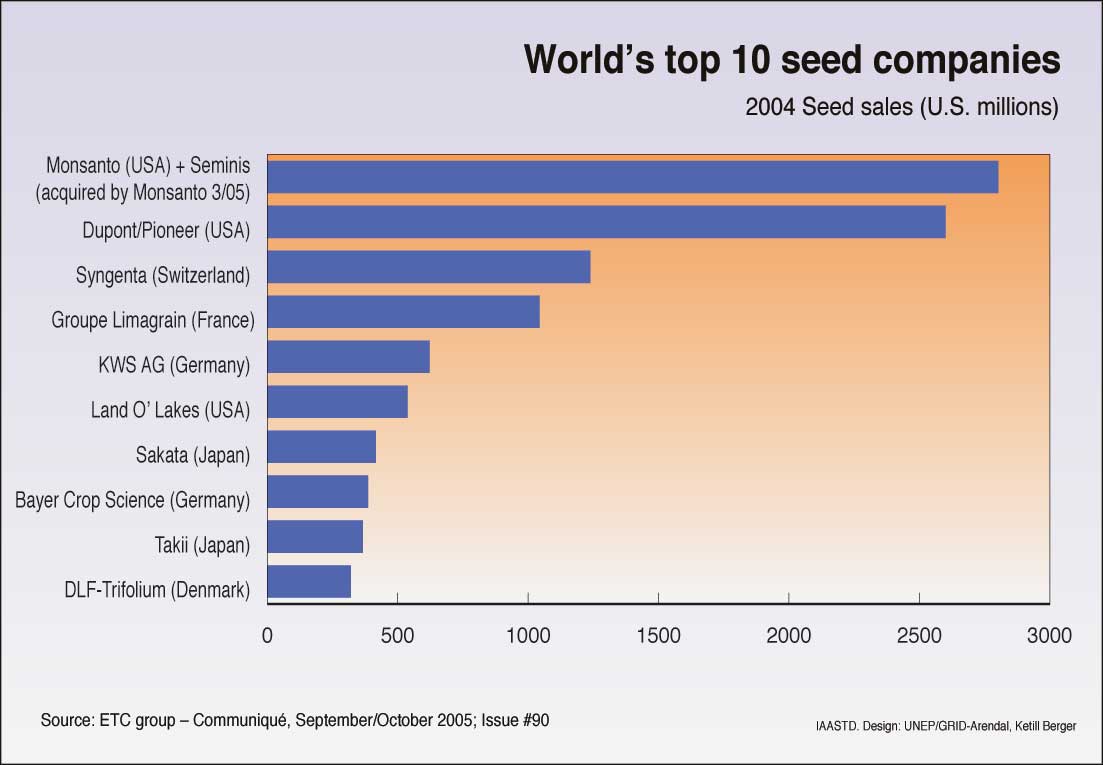
| Previous | Return to table of contents | Search Reports | Next |
| « Back to weltagrarbericht.de | ||
28 | IAASTD Synthesis Report

Figure SR-P5. Global vegetable seed market shares.
• Expanding use of local and formal AKST (e.g., conventional breeding, participatory decentralized breeding and biotechnology) to develop and deploy suitable cultivars (millets, pulses, oilseeds, etc.) and better agronomic practices that can be adapted to site-specific conditions [CWANA; ESAP; SSA]. Important to consider when shifting from food crops to biofuels on the basis of economic feasibility is attention to the impact of large areas devoted to such crops on food security and the environment [ESAP, LAC, SSA; SR Part II: Bioenergy]. |
|
populations to ensure access to affordable and safe food; Public sector research has yet to offer a range of viable rural management and agronomic practices for crop and livestock systems that are appropriate for water-restrained dry lands and poor farmers [CWANA; ESAP; SSA]. Private sector research, concentrated on internationally traded crops, is less likely to find such projects profitable, at least in the immediate future. Yet, public funding for such research in these crops and regions will be necessary if we are to address the needed changes in organizational and institutional arrangements to respond to the constraints imposed by poor management systems. Such investments will likely assist in limiting natural resource degradation and environmental deterioration, and contribute to decreasing the poverty and pockets of hunger that currently persist in the midst of prosperity [ESAP]. Environment |
| Previous | Return to table of contents | Search Reports | Next |
| « Back to weltagrarbericht.de | ||